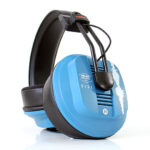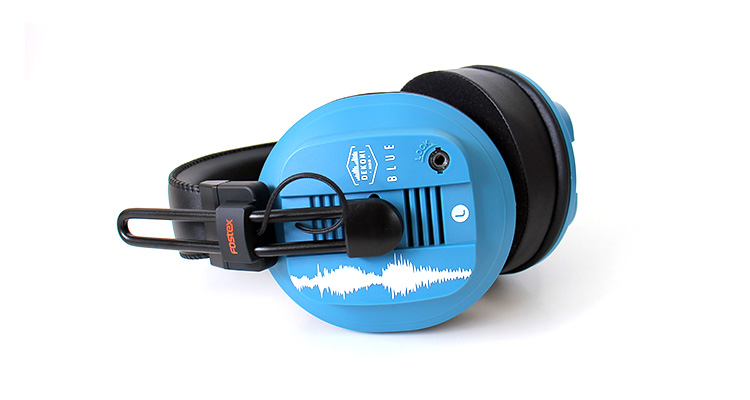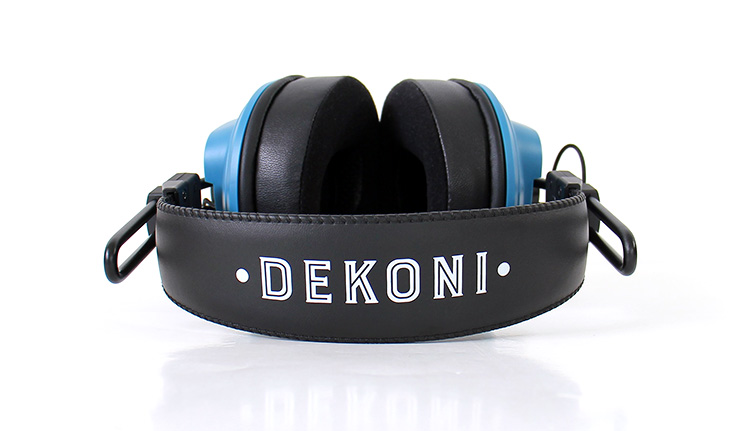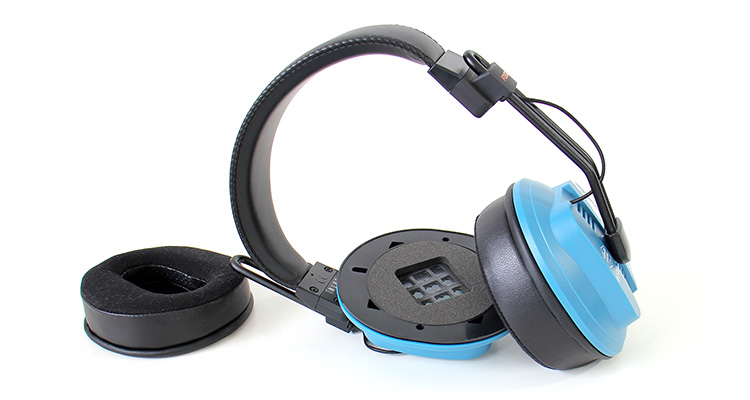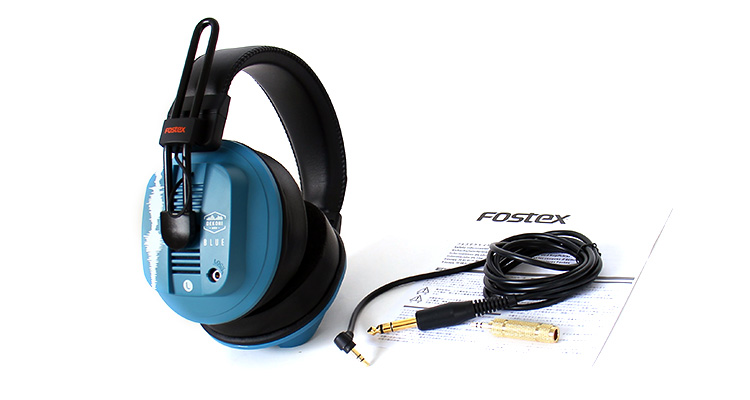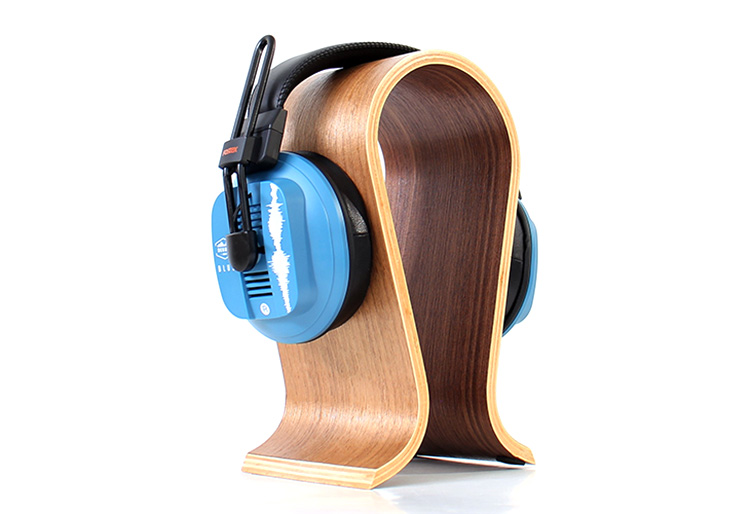In this feature, we review the Dekoni Audio Blue which is a Fostex-approved modified T50RP MK3 semi-open planar magnetic headphone. It is priced at $249.99 currently.
Disclaimer: This sample was sent to us in exchange for our honest opinion. Headfonics is an independent website with no affiliate links or status. We thank Dekoni Audio for their support.
Click here to read more about the planar headphone products we have previously featured on Headfonics.
Note, that this article follows our latest scoring guidelines which you can read here.
Today we’re going retro and reviewing a model that has been on store shelves for quite some time now.
This is a review that’s quite overdue and we usually review the latest gear but not today. We’re taking a look at the Dekoni Audio Blue which is a Fostex T50RP MK3 modified by Dekoni.
Fostex decided to partner up with Dekoni Audio on this venture to see what they could come up with and to date, it is the only modded T50RP authorized by Fostex.
Dekoni Audio is mostly known for its excellent line of ear pads that most times surpass stock inclusions in quality, comfort, and durability.
So the Blue was tuned with Dekoni pads in mind. The main concept here was to increase comfort first off but the fun factor aspect was just as importantly thrown into the equation.
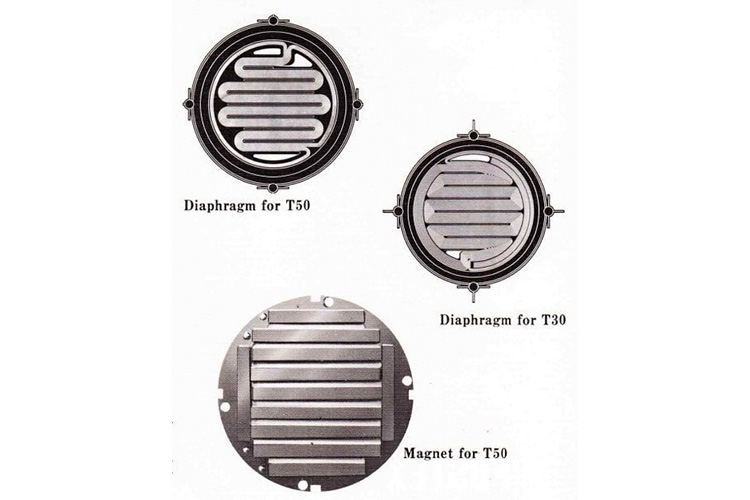
Tech Highlights
The T line of Fostex headphones has a very long history. The T50 from what I gathered was the second consumer planar magnetic headphone released for public consumption.
The first place spot belongs to the Wharfdale 1D1 released back in 1972. The first Fostex T series ever released was back around 1978. I bet they predate many of our readers.
Their claim and long-time success are mostly attributed to the RP diaphragm series drivers. This driver uses a copper foil etched onto a polyimide film sandwiched inside its frame and with a dual-sided magnet setup.
The design was a huge upgrade from what was available back then which were rather basic dynamic driver cans. I feel this was a turning point for headphones in history.
The current T50 MK3 has all the tricks in tuning and manufacturing that Fostex learned along the way but was tuned to be studio monitors nonetheless and somehow the fun factor was overlooked. So in this area, Dekoni generally capitalized sonically.
Design
The dimensions and general design of the T50RP were kept but to be more distinct the cups were molded from a blue color polymer and all the branding, left, and right indicators are white along with a full spectrum sound wave pattern design.
Now, most people would assume that the Blue cup color is the only change but look again. The adjustable forks and surrounding parts were blackened and with a very durable finish, I must say.
There’s just a hint of red on the fork bracket that spells out the Fostex name. Other than that the rest of the Blue headband assembly seems similar except that it says Dekoni on top instead of Fostex.
The major change took place with the pad replacement. I don’t know anyone nor have I seen or heard any reviewer rave about the stock Fostex T50RP pads. I keep remembering words such as pancakes, flap jacks, and useless but I’m not one to judge.
The pads used on the Dekoni Blue are a substantial upgrade over stock Fostex pads which are made from stiff pleather and stuffed with a thin amount of padding.
These Dekoni pads are soft and comfortable. They also seem to be very durable and rather easy to replace.
Comfort & Isolation
I took a quick peek inside the cups to see some of the tuning implementations and I’m not discussing what I saw here except for the fact that the rear cup vents seem to be covered off with a particular type of thick cloth.
So they’re labeled as a semi-closed back but one could technically call the Dekoni Blue a closed-back headphone.
These cans were originally designed to be good in isolation and that hasn’t changed but they do best at leakage. There seems to be none but there seems to be a small amount of ambient noise that comes in, however.
Comfort is good. Clamping force is a good medium amount and you rarely feel like your head is being compressed.
The pliability of Blue pads which are plush and comfortable helps a bunch. The center is oval-shaped but they’re just as comfortable as the round hole center variant of Dekoni pads, to be honest.
Stock Pads
Now let’s talk about the Blue pads for a few seconds. They’re made by Dekoni, the end. They’re a hybrid Dekoni pad with a slightly narrow-frontal angle and an oval-shaped inner hole. Dekoni could have used a round hole pad but this was done purposely it seems.
From what I understand these drivers tend to produce some high-frequency nastiness around 8kHz that comes mostly from the edges of the diaphragm, hence the oval-shaped inner hole that covers part of that outer portion of the diaphragm which simultaneously quells the highs.
You could use almost any 100mm pad set on the Dekoni Blue. The Elite series pads fit these perfectly and are easy to mount on the rim of the driver mounting base with a bit of patience. Hybrid, Sheepskin, Velour, and Fenestrated Sheepskin are the available choices.
Stock Cable
Now here is where I run into something that I feel should have been given more thought. The original T50RP, particularly the MK3 variant on which the Blue was based came with a cable assembly that matched the cup connection cable and both were cloth-wrapped and orange in color.
Now, since the Dekoni Blue headphone design went with an all-blackout concept, the cable is also black.
Now, I’m not a lover of the color orange and the color scheme is not my major complaint here but the stock cable seems to be a downgrade from the cloth-covered original variant.
Connectors
The other aspect that I feel needs an update is the connectivity. Nowadays a balanced connection is a rather standard fare and I understand the retro nature of the Dekoni Blue.
But due to the notorious nature of them needing hefty amounts of power to sing optimally, a balanced connector would have been nice and almost necessary.
The rest of my feelings on the stock cable are neither here nor there. The angled locking cup connector uses a conventional 3.5mm plug but you can’t use just any 3.5mm terminated cable which is another con.
The other end is terminated with a 6.35mm and there’s a 3.5mm step-down adapter included. The combined pair becomes a long, hefty lever and a bad idea so I would just stick to 6.35mm use.
Packaging & Accessories
Yep, the box is blue but thankfully not too large. It follows the cup color scheme which is also blue and contains white accents and logos including the same full spectrum sound wave pattern from the cup design. It’s a simple box.
The headphones come in a twist-tied plastic bag inside the box. I did find a silica pack on the outside of the bag and inside the box but not inside the bag where the headphones were packed in.
The overall packaging seems very utilitarian. It’s no secret I don’t fancy expensive-looking boxes that adorn my closet space so this is fine by me.
The Blue cable comes wrapped with a twist tie and you also get a paper manual but it’s a standard Fostex insert and not Dekoni branded.
It seems Dekoni didn’t print their own and just included an original T50RP insert which is also fine. Perhaps it was because of contractual agreements. I prefer product over paper any day anyway.
Sound Impressions
Summary
The Dekoni Blue is a punchy and fun headphone to listen to so it seems the main sonic objective was met.
The first thing that hits you is the bass which is somewhat on the elevated scale of flat. It has a lot of presence around 40Hz to 120Hz which seems to be the major contributor to the generally dark and slight V-shaped signature these cans produce.
The midrange falls into a relaxed category since it seems to calm up until you run into a 2kHz peak that while listening to music doesn’t seem to affect the overall quality much or become bothersome. It does present itself with an increase in intensity as the volume is raised, however.
The treble is also relaxed but portly and just plays along in the background just above the mid-bands. They’re generally well grounded in the sense that they don’t seem too forward but do project energy mostly at head level.
If we observe the frequency extremities going both ways there seems to be a good amount of bottom-end extension but perhaps some will perceive a reduced reach in high frequencies.
There’s enough there that they remain sharp and true-toned in most senses albeit with a slight meaty aspect.
Bass
The bass, in general, seems forward but mostly in that mentioned 40Hz to 120Hz area. The lowest bass octave does project a slight daftness.
There is lots of low-end extension down to 10Hz but the lowest bass portion might give off an unrefined texture at times.
There’s plenty of energy in the low bass and midbass presence which contrary to the lowest octave, does present itself with precision, and deep rumble to boot especially if you power them correctly.
The bass tuning does well with EDM bass but it also has a delicate side that does well with Jazz for example which requires a speedier bass response and higher levels of precision.
Vocals
The vocal presentation is full-bodied and deeply timbered but simultaneously remains naturally toned. The Vocal presentation is also warm and intimate.
Only on occasion do you get a slight apparition of that 2kHz peak which just pushes forward the general presence but can also present a forwardness contrasting the overall smoothness.
On the measurement graph, this 2kHz peak shows up around 2k peak is shown to be closer to 1200Hz. However, the so-called nasty 8kHz peak seems to be gone.
Highs
The upper region also seems slightly dark but presents itself well-extended on most occasions. The high frequencies are coherent, relaxed, and not overemphasized.
Some might complain of a lack of crystallinity but in general, they’re slightly de-emphasized and non-fatiguing but do contain a bit of mass.
Staging & Dynamics
One of the greatest characteristics of the Dekoni Blue is its ability to emit a relaxed tonality at low volume or low power and then transform into party animals when you push the drivers hard, which by the way are capable of handling 3000mW at their nominal impedance of 50Ω.
The Dekoni Audio Blue is a rather tamed headphone that can also party hard but what I like about them most is that they usually sound effortless or unrushed and rarely become congested even when things get complex.
They can also make a poor source sound well which contrasts their original studio monitor concept but that’s part of the fun aspect about them at play. They tend to be focused and not expanded. They’re not too demanding either when it comes to source quality.
The stage size is right below what I would consider a medium size. They project good positioning on each side of the listener but the width doesn’t go past the ear position.
The overall stage presents itself as a small listening space with a focused perspective. It’s not conglomerated but the overall size is not very large which provides a more intimate experience.
Click on page 2 below for pairings and our select comparisons





